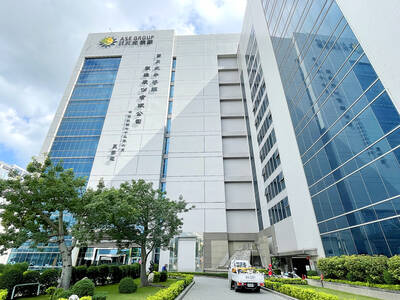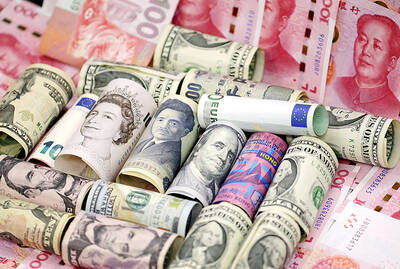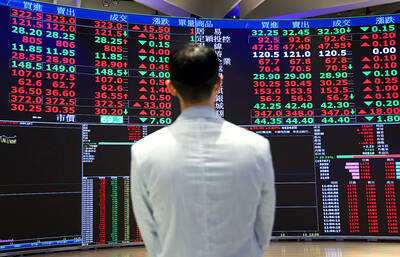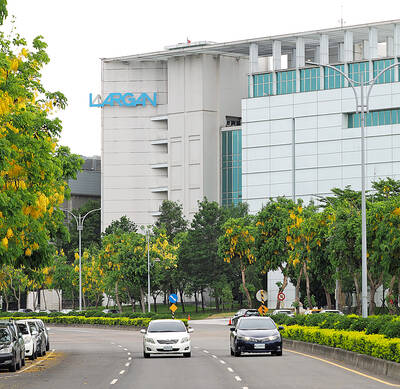Beijing has set out to extend its domestic laws across international borders with a ban on selling some goods to the US that applies to companies both inside and outside China.
The new export control rules are China’s first attempt to replicate the extraterritorial reach of US and European sanctions by covering Chinese products or goods with Chinese parts in them. In an announcement this week, China declared it is banning the sale of dual-use items to the US military and also the export to the US of materials such as gallium and germanium.
Companies and people overseas would be subject to those restrictions, the Chinese Ministry of Commerce said on Tuesday. “Any organization or individual from any country or region that violates the above provisions and transfers or provides relevant dual-use items originating in the People’s Republic of China to organizations or individuals in the United States will be held accountable according to law.”

Photo: AP
The decision marks the first time China is employing controls that extend to products with both civilian and military uses. The rules went into effect on Sunday and allow for application similar to the US Export Administration Regulations, according to a report from the law firm Covington & Burling, which noted that there are “few details” on when this extraterritoriality would be invoked.
The precedent-setting move amounts to an escalation with the US weeks before US president-elect Donald Trump takes office.
China is the top global supplier of dozens of critical minerals, and concerns about its dominance have been mounting in Washington since Beijing placed initial controls on exports of gallium and germanium last year.
“I’m not aware of another such case under the current regulatory regime,” said Cory Combs, an associate director at research firm Trivium China. “For companies, the extraterritorial application means they shouldn’t bank on any loopholes to keep supplies flowing. Simply put, companies using the affected inputs need to find alternative supplies ASAP.”
The new provisions build on earlier language in the 2020 export control legislation, which also said that the law applied to individuals or organizations inside or outside of China, Combs said.
In recent years, the Chinese government has been strengthening its toolbox to push back against US sanctions and trade controls, creating the “Unreliable Entity List” and “Export Control Law” in 2020 and the “Anti-Foreign Sanctions Law” in 2021.
It also passed a National Security Law for Hong Kong, which claimed jurisdiction over acts committed outside China’s territories.
While the new formulations in the rules are concerning, “we don’t yet have a clear consensus view on how far Beijing might go to investigate or punish third countries suspected of prohibited re-exports,” Combs said.
“The language primarily serves to close the potential loophole for domestic firms to try to reroute exports as opposed to seeking a new avenue to punish third countries,” he said.
“Beijing’s new export controls will likely fall short of Washington’s in international surveillance, compliance and enforcement. Beijing’s statement vaguely threatens countries that help the US evade the controls,” Gerard DiPippo, Maeva Cousin and Nicole Gorton-Caratelli of Bloomberg Economics said.

EXPANSION: The investment came as ASE in July told investors it would accelerate capacity growth to mitigate supply issues, and would boost spending by 16 percent ASE Technology Holding Co (ASE, 日月光投控), the world’s biggest chip assembly and testing service provider, yesterday said it is investing NT$17.6 billion (US$578.6 million) to build a new advanced chip packaging facility in Kaohsiung to cope with fast-growing demand from artificial intelligence (AI), high-performance-computing (HPC) and automotive applications. The new fab, called K18B, is to commence operation in the first quarter of 2028, offering chip-on-wafer-on-substrate (CoWoS) chip packaging and final testing services, ASE said in a statement. The fab is to create 2,000 new jobs upon its completion, ASE said. A wide spectrum of system-level chip packaging technologies would be available at

Taiwan’s foreign exchange reserves hit a record high at the end of last month, surpassing the US$600 billion mark for the first time, the central bank said yesterday. Last month, the country’s foreign exchange reserves rose US$5.51 billion from a month earlier to reach US$602.94 billion due to an increase in returns from the central bank’s portfolio management, the movement of other foreign currencies in the portfolio against the US dollar and the bank’s efforts to smooth the volatility of the New Taiwan dollar. Department of Foreign Exchange Director-General Eugene Tsai (蔡炯民)said a rate cut cycle launched by the US Federal Reserve

HEAVYWEIGHT: The TAIEX ended up 382.67 points, with about 280 of those points contributed by TSMC shares alone, which rose 2.56 percent to close at NT$1,400 Shares in Taiwan broke records at the end of yesterday’s session after contract chipmaker Taiwan Semiconductor Manufacturing Co (TSMC, 台積電) hit a fresh closing-high amid enthusiasm toward artificial intelligence (AI) development, dealers said. The TAIEX ended up 382.67 points, or 1.45 percent, at the day’s high of 26,761.06. Turnover totaled NT$463.09 billion (US$15.22 billion). “The local main board has repeatedly hit new closing highs in the past few sessions as investors continued to embrace high hopes about AI applications, taking cues from a strong showing in shares of US-based AI chip designer Nvidia Corp,” Hua Nan Securities Co (華南永昌證券) analyst Kevin Su

Handset camera lens maker Largan Precision Co (大立光) on Sunday reported a 6.71 percent year-on-year decline in revenue for the third quarter, despite revenue last month hitting the highest level in 11 months. Third-quarter revenue was NT$17.68 billion (US$581.2 million), compared with NT$18.95 billion a year earlier, the company said in a statement. The figure was in line with Yuanta Securities Investment Consulting Co’s (元大投顧) forecast of NT$17.9 billion, but missed the market consensus estimate of NT$18.97 billion. The third-quarter revenue was a 51.44 percent increase from NT$11.67 billion in the second quarter, as the quarter is usually the peak